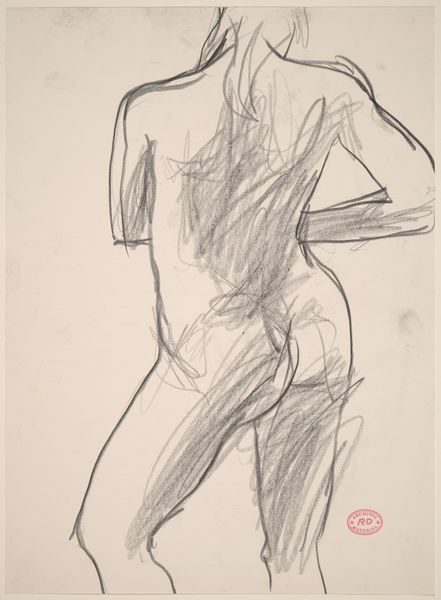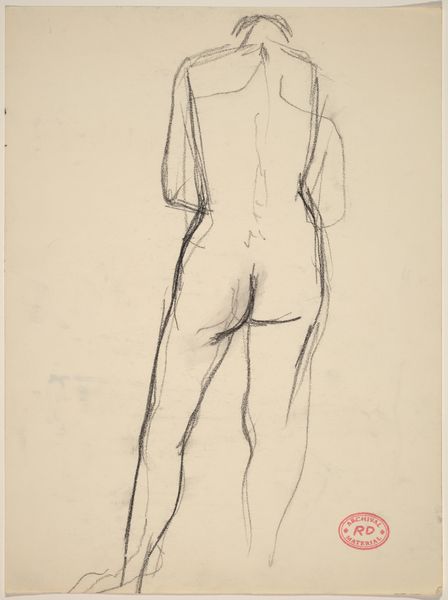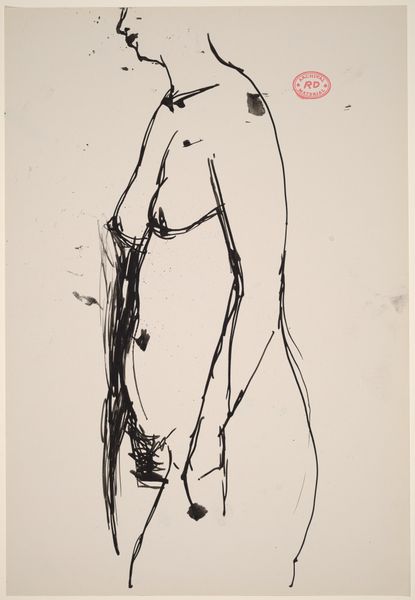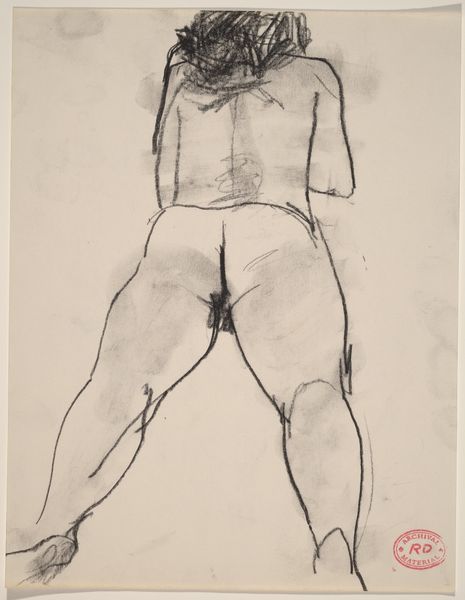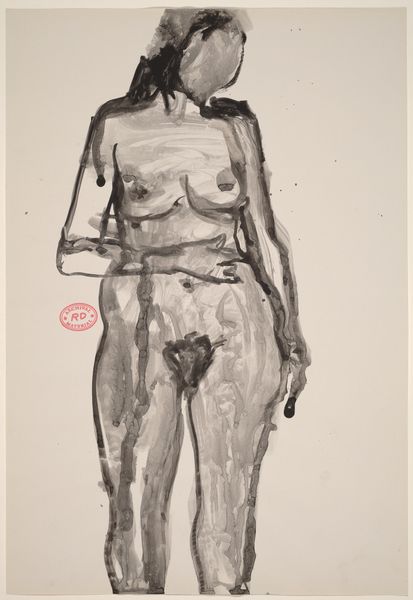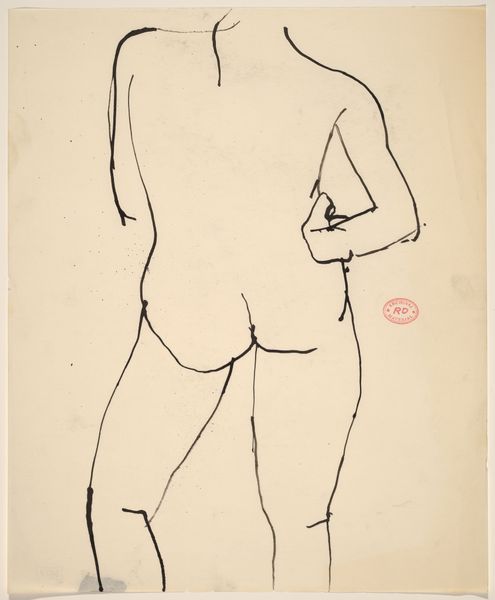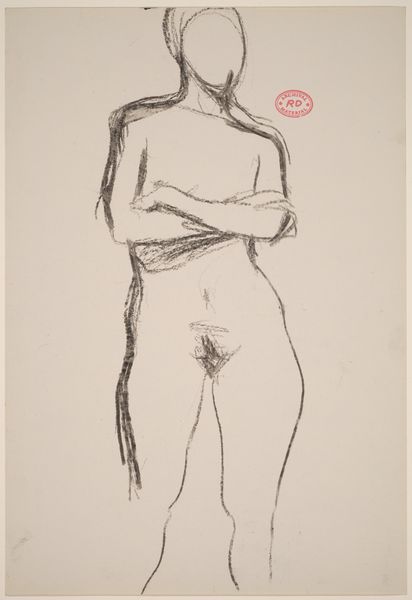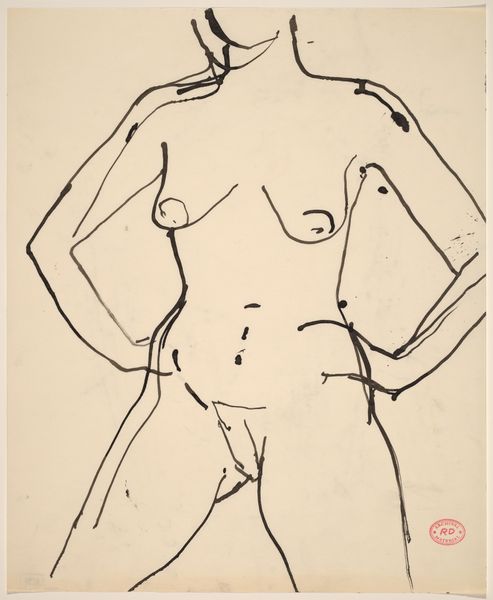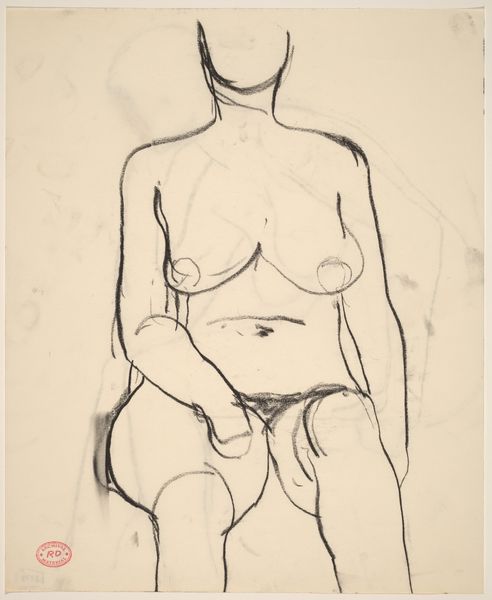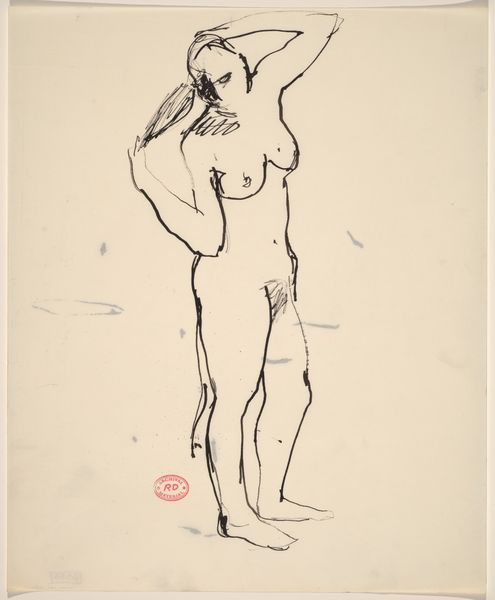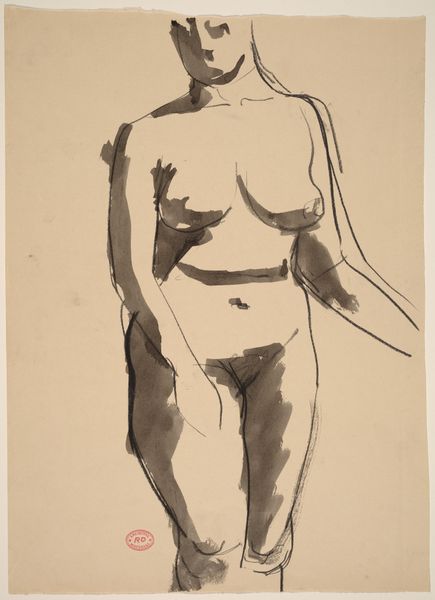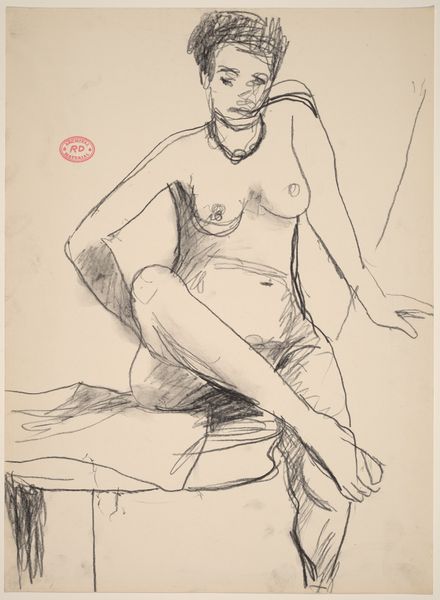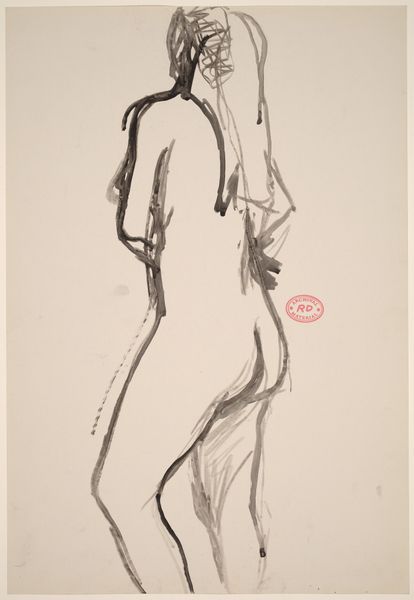![Untitled [standing female nude grasping her shoulder with her right hand] by Richard Diebenkorn](/_next/image?url=https%3A%2F%2Fd2w8kbdekdi1gv.cloudfront.net%2FeyJidWNrZXQiOiAiYXJ0ZXJhLWltYWdlcy1idWNrZXQiLCAia2V5IjogImFydHdvcmtzLzMxMGNjNmFmLTEzNjQtNDBiZi04ZDMwLWJlMWY2NGNhOGYyZS8zMTBjYzZhZi0xMzY0LTQwYmYtOGQzMC1iZTFmNjRjYThmMmVfZnVsbC5qcGciLCAiZWRpdHMiOiB7InJlc2l6ZSI6IHsid2lkdGgiOiAxOTIwLCAiaGVpZ2h0IjogMTkyMCwgImZpdCI6ICJpbnNpZGUifX19&w=3840&q=75)
Untitled [standing female nude grasping her shoulder with her right hand] 1955 - 1967
0:00
0:00
drawing, ink
#
abstract-expressionism
#
drawing
#
figuration
#
bay-area-figurative-movement
#
ink
#
nude
#
watercolor
Dimensions: overall: 43.2 x 27.9 cm (17 x 11 in.)
Copyright: National Gallery of Art: CC0 1.0
Curator: Here we have an untitled ink drawing by Richard Diebenkorn, likely created sometime between 1955 and 1967. It depicts a standing female nude figure. Editor: Striking. There’s an immediate tension between the raw, almost urgent lines and the delicate washes of ink. The composition is strong, the figure monumental, yet fleeting. Curator: Indeed. Diebenkorn was, of course, working within the legacy of Abstract Expressionism, but he was equally drawn to figuration, especially the female form. One sees him using materials, like this ink, to challenge notions around 'high' and 'low' art. Editor: The washes definitely play a key role. Look how they model the form, creating depth and volume with such minimal means. The areas of blank paper are as important as the marks themselves, contributing to the overall dynamism. The shoulder grasped with the right hand creates a beautiful compositional tension. Curator: And consider the historical context. Mid-century America, grappling with changing social norms. Nudes were no longer straightforward celebrations of beauty; they become vehicles to investigate issues such as identity, vulnerability, the commodification of the body. Editor: True, but within this composition there is also a real sensitivity in how Diebenkorn treats the female form. It is about how those lines and their application model not a body as a commodity, but volume in space. Even just that touch of darker ink where she's grasping her shoulder is an exquisite use of visual weight. Curator: Exactly! It is this visual language—the contrasting textures and stark juxtapositions—that conveys Diebenkorn’s distinct vision. It speaks to larger discourses regarding abstraction and figuration, studio practices, and of course gender politics during the mid-20th century. Editor: Seeing how a basic medium such as ink becomes the means to play with space and form provides real evidence of Diebenkorn’s formal concerns in figuration. Curator: I find this exploration truly compelling. Editor: Absolutely, it provides endless points for meditation.
Comments
No comments
Be the first to comment and join the conversation on the ultimate creative platform.
